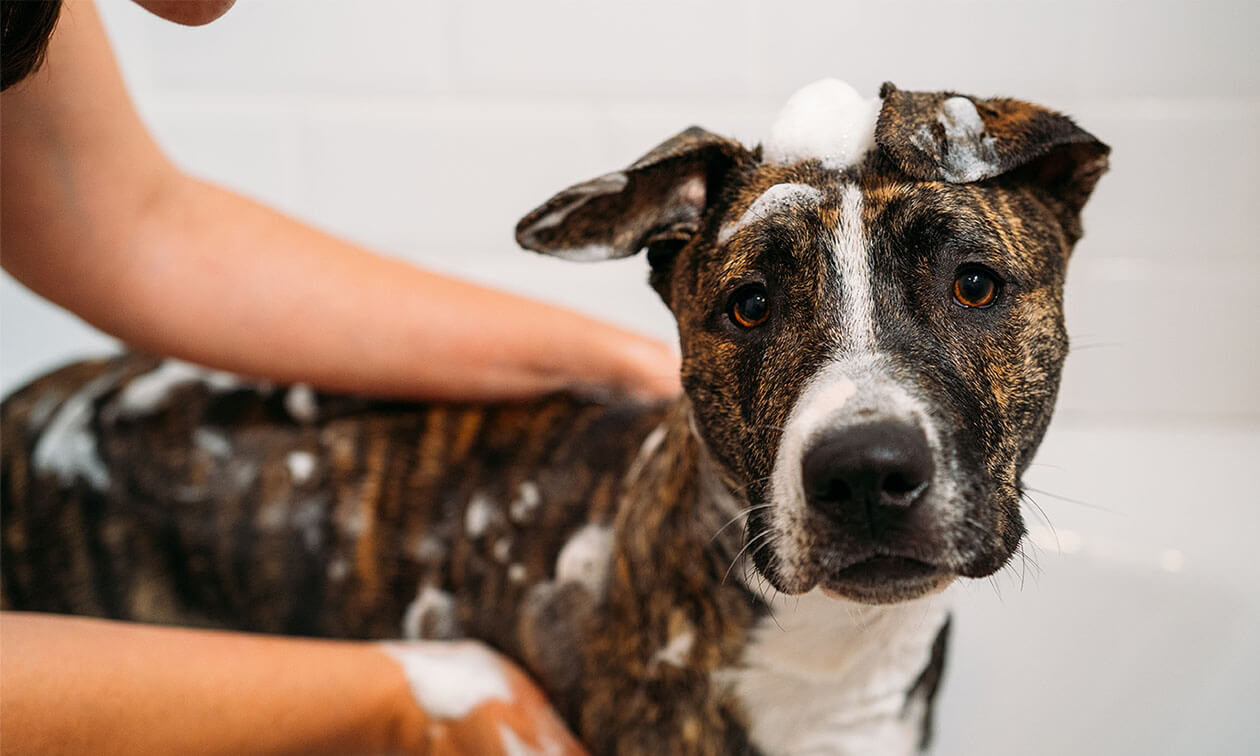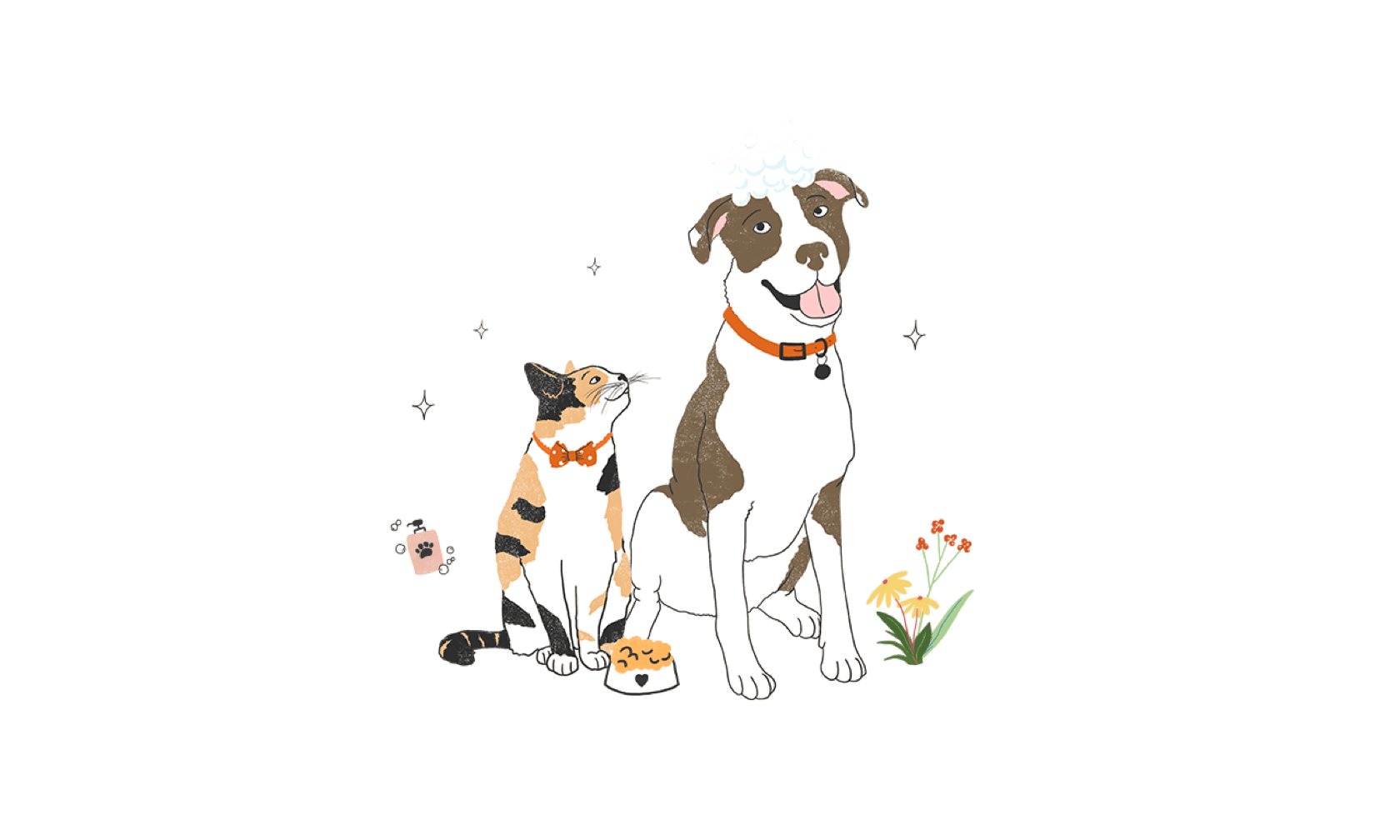The spray of a skunk is one of those smells that you recognize instantly. They’re adorable and an important part of our ecosystem, but when they spray it can be bad news. If your dog is the target of that spray, you need to jump into action quickly to minimize the stinky chaos and your dog’s discomfort. In rare cases it could cause some serious health problems with your dog.
Why Do Skunks Spray and What Are They Spraying?
Spraying is a defense mechanism for skunks. They’ll usually try other means of scaring off potential predators first, like hissing and stomping. If that doesn’t work (which is often the case with curious dogs), spraying is their next defensive maneuver. You don’t even have to be close to get sprayed because they can spray a good 15 feet or more.
Skunk spray is an oily substance composed of seven different compounds. It’s produced by glands inside sacs in the backend of the skunk. Some elements of skunk spray bond to skin proteins on contact, others turn into horribly, smelly gas. Water can make that smell worse and the spray itself is sticky, so it doesn’t just run off its target —it stays put. Once the smell has been released, it can last two weeks or more. If it seeps into fabrics or fur and isn’t treated right away, that smell can hang around for months or even years.
How to Get Rid of Skunk Smell on Dog
If your dog gets “skunked,” your first thought will likely be, “How do I minimize the stink?”, but that’s not necessarily the worst part. Skunks tend to spray animals in the face, and the compounds in their spray can cause serious irritation to the eyes. Your dog may experience pain, swelling, redness, and even temporary loss of sight. If they’re unlucky enough to swallow any of the spray (or try to lick it off), they can be hit with drooling and vomiting. If your dog’s eyes are red or they are holding them shut, call your veterinarian. In rare cases getting sprayed by a skunk could cause anemia. If you notice your dog acting lethargic or sick after getting sprayed, you need to take them to your veterinarian.
What To Do If Your Dog is Sprayed by a Skunk
Do your best to stay calm, especially if the skunk is still in the area. They can spray multiple times before their tank runs low. They’re already on high alert and now your dog is probably freaking out too. Keep your cool so you can effectively manage the situation and avoid a repeat spraying.
- Restrain your dog. Carefully get control of your dog, remembering that they may be in pain and/or have limited sight and could react aggressively or fearfully. You also don’t want them going after the skunk. Start with a leash. You can use a towel or blanket to wrap them up more securely if needed.
- Stay outside. If you’re at home, don’t rush to get your dog inside. You want to keep the skunk spray away from carpets, furniture, etc. If you’re away from home, wipe your dog off with whatever you have handy before putting them in the car. If you have a way to protect your seats, do that as well.
- Grab your pet first aid kit. If you don’t have a pet first aid kit, try to find a leash (if not secured), towels, water, saline eye wash, artificial tears, eye lubricant, gloves, and skunk-odor-removing shampoo. If you don’t have the shampoo on hand, see below for DIY alternatives.
- Start with your dog’s face. Get your gloves on. Use the water or saline wash to flush your dog’s eyes gently but thoroughly. The saline eye wash doesn’t have to be dog-specific. Human saline wash is fine. Use the towel to wipe your dog’s eyes, being careful not to let the towel touch other areas the skunk sprayed. If you have artificial tears, add a few drops to each eye to provide some additional relief.
- Wipe down their body. Use a few towels to get as much oily spray off as possible before washing your dog.
Shampoo your dog. Follow the instructions on your skunk-odor-removing shampoo. If you have eye lubricant available, apply some to your dog’s eyes first. If not, be extremely careful around the head and face. The shampoo can be highly irritating to the eyes.
- Rinse well. Make sure you thoroughly remove all the shampoo to avoid skin irritation. And if you didn’t use eye lubricant, it’s a good idea to give their eyes another rinse with the saline eye wash to make sure the shampoo doesn’t cause eye irritation.
- Repeat as needed. It may take more than one shampooing to completely remove the odor.
- Dry your dog. Use clean towels, a hairdryer on the low, cool setting, or an at-home, dog-specific dryer if you’re experienced using it.
- Toss or wash your gloves, towels, and clothes. Soak fabrics in one-part white vinegar and five parts warm water for two to three hours. Give the fabric a good massage in the vinegar bath first. After soaking, wash in warm or hot water. Hanging them outside to dry on a sunny day can also help with lingering odor.
ZPC-02530



